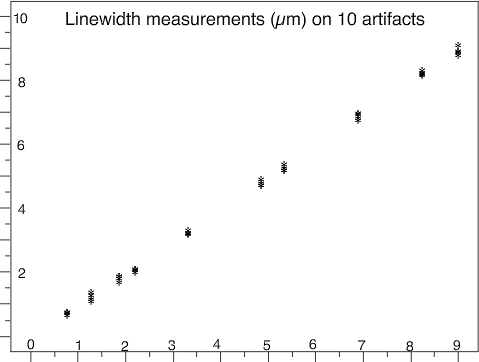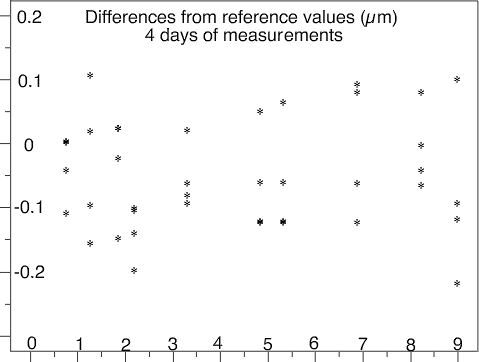2.3. Calibration
2.3.6. Instrument calibration over a regime
2.3.6.4. What can go wrong with the calibration procedure
2.3.6.4.1. |
Example of day-to-day changes in calibration |

REFERENCE VALUES (μm)

REFERENCE VALUES (μm)
 REFERENCE VALUES (μm)
REFERENCE VALUES (μm)

